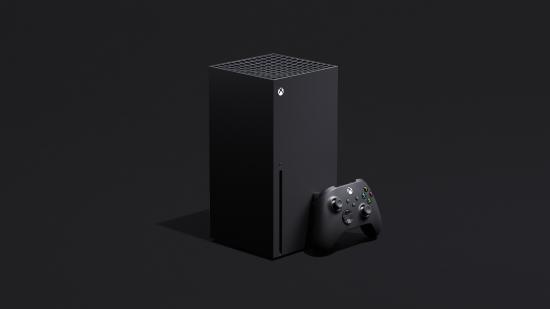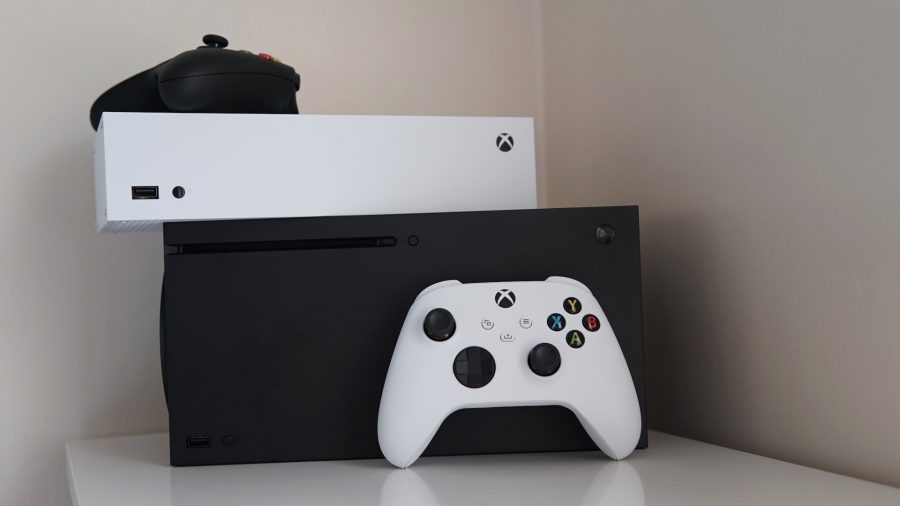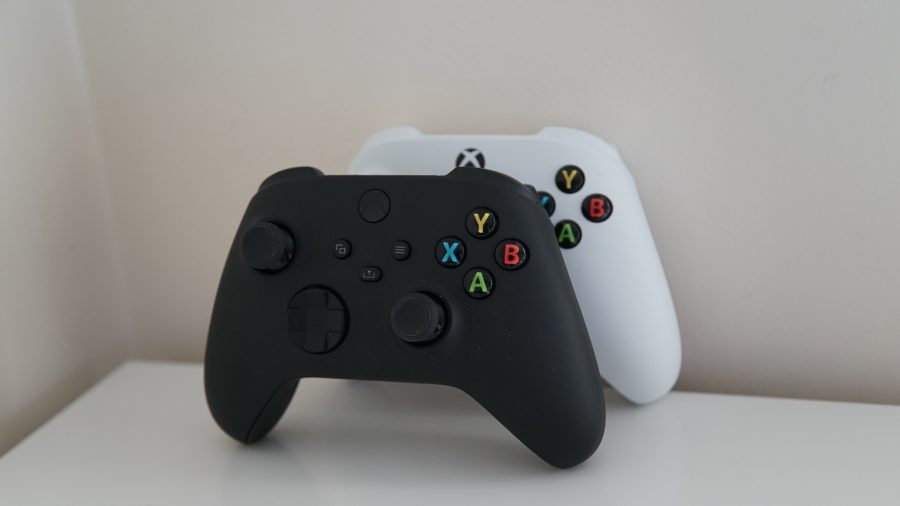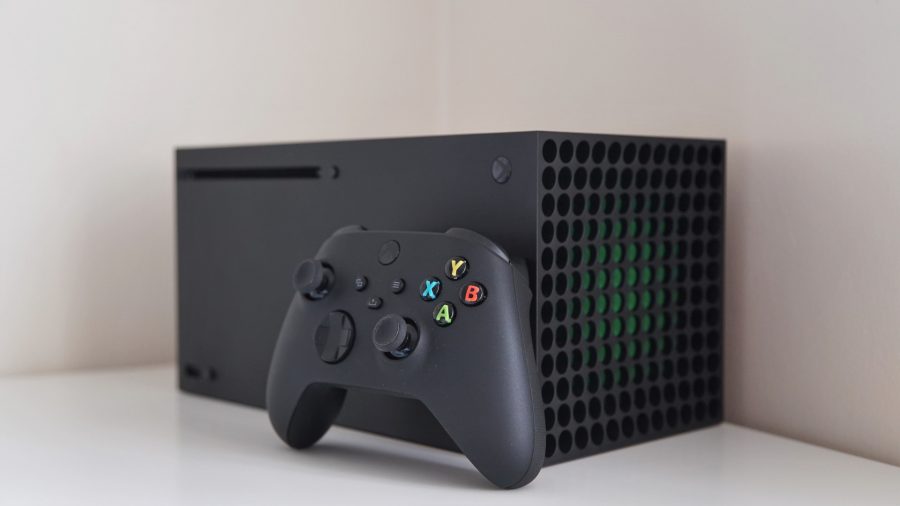Our Verdict
A powerful console that has set a new standard, but one that was ultimately let down by its launch line up.
When the Xbox Series X first hit shelves worldwide, it did so to a mixed reception. While the sheer power of the console certainly proved that a new age of gaming was finally here, its lack of new triple-A games certainly left a lot to be desired. However, since then, the current-gen console has made considerable strides.
The beefy Xbox Series X is what Microsoft claims as the fastest and most powerful Xbox to date, and after having one since launch, it’s hard to argue otherwise. The best Xbox Series games look absolutely stunning, load times have been obliterated, and there are new ways to play games on the go. Regardless of whether you’ve always been a fan of Xbox consoles or not – the Series X really packs a punch.
It’s a console that’ll play games in 4K resolution with ease, while improving the frame rate across the board. But like the Xbox One X before it, these improvements are largely locked to premium gamers who have top-notch TVs or monitors at home.
However, the Xbox Series X – especially years on from its launch – still has a lot to give.
Xbox Series X design
But before we get into the nitty-gritty details, let’s talk about the Xbox Series X design. Just like its competitor, the PlayStation 5, the Series X is a big old unit. Although it’s the same height as the Xbox One X, it’s much wider and will take up a lot more space. As such, it’s much heavier too, weighing a kilogram more than its predecessor. Of course, if you’re looking for a smaller next-gen console, the Xbox Series S is your best bet – but expect to lose out when it comes to overall performance.
That being said, the design is simple and will fit with the aesthetics of most living rooms – something that can’t be said for the bold PS5. The Series X can also be placed horizontally or vertically and will run pretty quietly whichever way you set it up.
For the last few years, I’ve had my Xbox stood vertically on my desk behind my monitor. Every now and then the fan will kick in when I’m playing particularly demanding games, but it’s still considerably quieter than the PS5.
In terms of ports and connectivity, the Series X carries three USB 3.1 Gen ports (one on the front, and two on the back), an ethernet port, and a HDMI 2.1 port. If you’re planning on downloading a lot of games, then you’ll probably become well acquainted with the storage expansion slot, which can be found at the rear. The Series X also has a disc drive for all your physical gaming and film needs.
While all of the above is fairly standard, the components under the hood are what make the console really appealing. Packing a 3.8GHz processor, 12-teraflop GPU, and 16GB GDDR6 memory, the full Xbox Series X specs really make it the most powerful Xbox console to date, possibly even of the current generation.
Xbox Series X performance
While the spec list sure is impressive, does it stack up to the hype? Due to the console’s lackluster launch line-up, this took some time, but the answer to this question now is absolutely.
The Series X offers 4K gaming at up to 120 frames per second, DirectX Raytracing, faster loading, and spatial audio. While we couldn’t properly put this to the test at launch, there are plenty of games out now (Forza Horizon 5, Microsoft Flight Simulator, etc.) that really push the Series X to its limits – and boy can it handle it.
Regardless of what you throw at the Xbox Series X, it seems to take it in its stride. Even busy multiplayer games like Gear 5, Call of Duty: Modern Warfare 2, Rocket League, Halo Infinite, and Rainbow Six Siege feel buttery smooth at all times. This is helped by the fact that the console offers a handy FPS boost and HDR reconstruction for older games.
The Xbox Series X’s performance has always impressed us, but we still maintain that one of the best features to come from the Series X is the Quick Resume feature. While Quick Resume doesn’t abolish loading screens altogether, it does obliterate the time you spend staring idly at them. A switch from Sea of Thieves to midway through the campaign of Gears 5 took us just eight seconds for example, but the time can vary anywhere between a handful of seconds to 45-50 seconds depending on the game.
While on paper that might seem like a lifetime, you’ll be surprised at how smooth the process is and how quickly you’ll be able to jump back into your favorite games right where you left them.
Of course, Quick Resume doesn’t really work for multiplayer games since you’ll be chucked out of lobbies if you’re away from the game for too long, but the feature will minimize the number of loading screens you see. So, in that sense, there’s an advantage for you there if you spend most of your time playing processor-heavy games like Warzone 2.
Xbox Series controller
One of the most overlooked changes to the new generation of Xbox consoles is to its controller. While at first glance it doesn’t look like the pad has changed all that much from the previous generation, it’s the perfect reminder that looks can be deceiving.
I’ve always struggled with the Xbox controller. Its big, bulky form has always felt weird in my relatively small hands, but with the Xbox Series controller, I was surprised by how well I took to it. To appeal to those with smaller hands, Microsoft has changed its form factor slightly, and it’s noticeable. For those that say size doesn’t matter, it really, really does.
Its smaller form now means that it can sit snugly in my hands, and the added bonus of having tactile grips on the back of the pad only adds to that comfortability. The grips extend over the long arms of the controller and onto the trigger buttons. This makes long gaming sessions even better since the plastic won’t slip in your hands during sweaty sessions.
The biggest change to the controller is to the D-pad, which is now based on the hybrid one used in the Xbox Elite Series 2. Its circular, concave shape makes it a natural resting position for your left thumb and allows you to hit combinations in games with deadly accuracy. However, it is very loud and emanates a sound similar to that of a mechanical keyboard. If you’re not a fan of the clickity-clack of those, then chances are you’re not going to be a fan of the controller either.
In addition to the changes to the D-pad, a share button has also been added to the controller to capture all your crazy 360 no scopes in all their 4K glory. It’s fairly easy to use and will import all your screenshots and videos to the Xbox app so you can share them online or with friends with ease.
While, on the whole, I was impressed by the controller and the subtle changes made to make more gamers comfortable, there was one thing that disappointed me – the rumble. The vibrations from the Xbox Series X controllers are feeble and often mistimed with the game you’re playing. This generation of gaming is meant to bring you closer to the action, but I can’t help but feel that the Xbox Series X has missed out on a trick by not investing in the same sort of technology that Sony has with the PS5 controller.
It might be a small thing, but in the battle to be the best gaming console on the market, the small things matter the most.
Remote play
One of the added benefits of the new wireless controller, regardless of its lack of true next-gen features, is that it can be connected to your phone or tablet via Bluetooth for remote play. It’s fairly painless to set up through the Xbox app providing, of course, you have a good mobile data plan or internet connection.
I used remote play on a couple of occasions and found it to be a good experience. My internet connection isn’t the best by any means, but it still allowed me to play Sea of Thieves on my phone without much latency at all. Of course, this won’t be the same experience for everyone, but the Xbox Series X does a good job at leveling expectations by testing your network during the setup process.
It also goes without saying that if you’re playing the best Xbox Series X games away from home, just be aware that it’ll eat into your data plan quickly.
Entertainment
And while gaming is at the core of Xbox Series X systems, it’s still a one-stop shop for all things entertainment. Consoles for so many of us now are much more than gaming systems and the Series X caters to exactly that.
Subscription services like Netflix, Disney+, and Apple Play, are all available in 4K through the app store, as are specific on-demand services like BBC iPlayer and 4OD. I could list them all, but realistically speaking, there’s not much missing on the Series X.
However, these apps take up vital space in the system’s storage. If you’re planning on using the Xbox Series X as your hub for all things entertainment, then you’ll need to think about getting an external hard drive that looks and feels like the old memory sticks from years gone by. This is because, from the get-go, you’ll lose 19% of your storage space to the operating system.
At launch, the Xbox Series X’s operating system took up 198GB of the internal 1TB NVMe SSD. While it’s not as bad as the storage space problems facing many Xbox Series S owners, if you’re used to having a load of apps installed at the same time as a handful of games, then your storage options are starting to look a little slender.
Xbox Series X Verdict
The Xbox Series X is the best Xbox console we’ve ever gotten our hands on. Since launch, it’s matured into a fine wine, with more than enough triple-A offerings to keep you busy on long, dark evenings. Providing you have a TV capable of 4K gaming at home, you’ll get everything you’ve ever dreamed of and more from the console.
First reviewed in November 2020.




